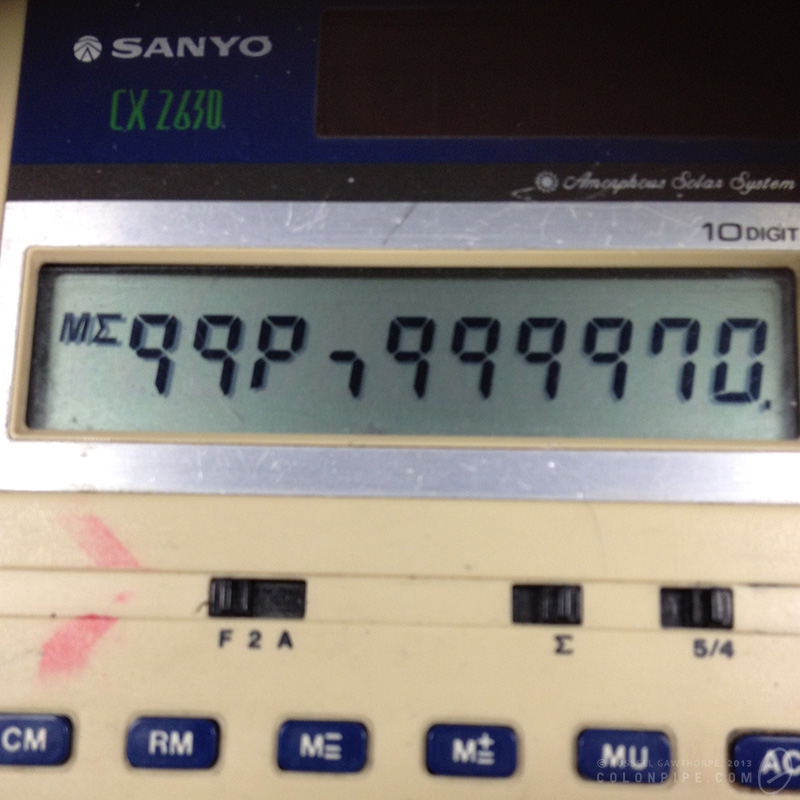Some "paranormal" phenomenon can't be easily explained. Some can. I suddenly feel compelled to explain one.
Orbs.
The usual story behind orb encounters is that a would-be ghost hunter, or some other kind of believer in orbish things will traipse through a "haunted" location taking happy snaps with their point-and-click digital camera. Upon viewing their photographs, they will more often than not find several of the photos are festooned with round objects, usually with hard glowing edges and often with tiny details inside of them.

There are a bunch of potential paranormal explanations for the spots -- ghosts, spirits, fairies. The description usually depends on the location, and what one expects to find there.
The reality is much more boring, though. The glowing items are just dust motes illuminated by the camera's on-board flash, hovering somewhere outside of the camera's focal plane. The hot-spots created in the photograph by out-of-focus illuminated debris are called circles of confusion.
Usually, these kinds of photos are only taken with cheaper point-and-click style digital cameras. The location of the on-board flash on these cameras is the cause behind the tendency for "orbs" to appear in the photos. The closer the flash sits to the lens of the camera, the more accurately the reflected light bounces back into the camera's lens. Digital SLR cameras do not capture as many artefacts of this kind, because the on-board flash is positioned further away from the lens.
The focal plane is the vertical slice of the universe at the correct distance from the camera's lens to be in focus given the camera's shooting settings. For a camera with a wide aperture (f-stop), the focal plane will be narrower, a smaller aperture will produce a deeper focal plane. Adjusting the camera's aperture controls two things: The depth of field (focal distance) and the amount of light that is allowed onto the camera's sensor. A wider aperture means more light, but a shallower depth of field. Point-and-click cameras, when used at night, will usually automatically open the aperture as wide as possible and adjust all available settings to allow the best possible photographs at night, the implications of which are that the camera is then set up to perfectly capture orbs!
Dust motes, insects and rain will produce orbs in varying quantities. While "circle of confusion" is the term for an individual hotspot, the collective term for the effect is bokeh, a Japanese word describing the qualities of the out-of-focus parts of a photograph.

Quality bokeh in a photograph is desirable, and can be achieved by using prime lenses with stupidly low f-stops. The above photograph is bokeh produced by Christmas lights at f-1.8. The lights closer to the camera produce larger circles of confusion than lights further away.
Here are some fun links, from the pro-orb side of the fence, just for shits and giggles:
Some crazy talk about how orbs are ghosts -- I'm particularly fond of the footnote on this one, which pretty much debunks all of the paragraphs above it with a bit of "oh, but they're often just dust, too".
Some more crazy talk -- I've included this one because the sentence "No one has the true answer to this question yet" makes me want to slap people for lack of research.
orbs.net -- this place has literally ones of photos of illuminated dust particles, all of which look eerily (if you'll pardon the inappropriate adverb) similar to my examples above. Must be ghosts!
This article includes the advice to turn your flash off if you want to photograph orbs without the interference of dust particles. Desire to slap is still high, but at least it's some progress!
Apparently some orbs are energy, and energy is spirit. I was under the impression that energy was energy. The law of conservation of energy insists that energy can't be created or destroyed, only transformed. I guess it can be transformed into spirits, and therefore into orbs. Or not.
So. Orbs. Just dust. Next please.





























